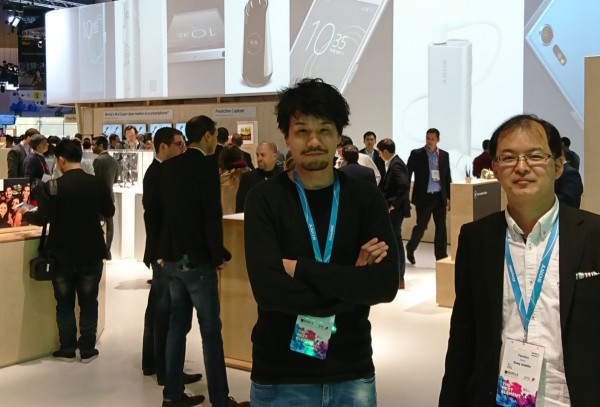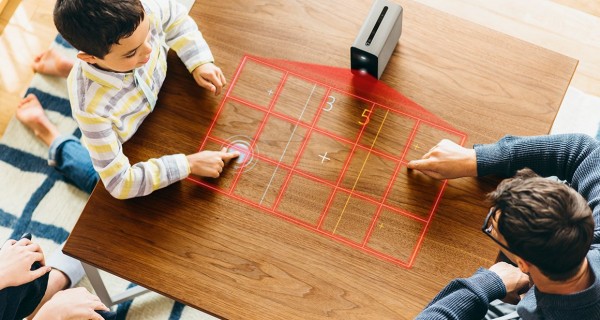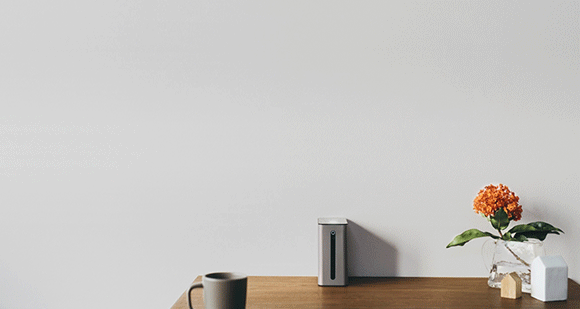
I haven’t been shy about my feelings towards the Xperia Touch, a short throw projector that can turn any surface into an Android touch-based device. Highly cool in video and concept form, but I’m not sure what the real world use of it would be, especially at its $1,500 price tag.
So what went into making the Xperia Touch? Arinobu Ueda (left) and Yuichiro Saito (right) are the lead designer and engineer on the project and did a short interview and shared their thoughts on the product.

Could you tell us a little more about the idea and any thoughts on its initial reception?
YS: “Our early concept for the Touch was an “advanced information window” for the whole family, a point of information that everyone would enjoy to engage with but also a focal point for group gathering.”
This keeps being pitched as one of the use case scenarios and I simply don’t see it. Perhaps it’s cultural but to think parents are going to sit around the dinner table, bring the Xperia Touch and play interactive games and educational stuff with their kids is simply not happening.
From first idea to having this product in front of us, how long has it taken?
YS: “We started to think about the possibilities of in-home interactive projection back at the end of 2015, from there we studied the concept and set to work on how we’d make our innovation a possibility.”
From a product development standpoint, that’s really not all that long. I’m surprised by this.
So any flat surface can now be turned into a touchscreen, are there any particular surfaces that work better than others?
AU: “Lighting is important to consider and projecting onto clear glass is difficult but any in-home surface would happily support the picture.”
Not surprised by that. Even a laser mouse still sucks on glass.
How big can Xperia Touch project to, are we limited to twenty-three inches?
YS: “We can project to a much bigger eighty inches allowing users to watch films or videos, but at this scale the touch functionality isn’t possible. We’d love to expand but currently twenty-three inches is the largest our interactive feature will reach.”
 Any bigger likely wouldn’t have much home use but could make for interesting commercial applications. I know the home of the future we see in Sci-Fi flicks is a projection on any wall but till that time, having an empty wall so you can turn it into a projection-based touch screen isn’t practical. A small space is at least more feasible and invisible to the home decor.
Any bigger likely wouldn’t have much home use but could make for interesting commercial applications. I know the home of the future we see in Sci-Fi flicks is a projection on any wall but till that time, having an empty wall so you can turn it into a projection-based touch screen isn’t practical. A small space is at least more feasible and invisible to the home decor.
And what about thinking smaller – would projection tech ever find itself in a smartphone?
YS: “We’re already very small. Our teams worked very closely to make the unit as small as we possibly could. Obviously the tech behind the projection has to be the priority, but we also had to ensure the overall unit would fit inside the home.”
AU: “Yes, the look and feel of the Touch sitting on a worktop, shelf or table was a huge development process for us. You won’t be using this all the time so the size, shape and feel of the Touch is in itself a piece of interior design. We picked the colour to blend in amongst other parts of the home, we didn’t want this to be a clunky unit and become an eyesore. The smooth edges work to make the Touch feel smaller and flow with other design features inside your home.”
Sony tried this with their camcorders for a few years – neat idea but ultimately not that useful. Nobody was taking their camcorder, recording, and then wanting to project it on the garage wall. With mobile, this could be more useful: imagine more easily taking your latest Keynote around with you or playing a movie on a wall at the hotel for the kids. Still, brightness remains a huge challenge.
This is great, we’re off to have a play but any inside details on what’s next for you both? Do you have any juicy details you might be able to reveal?
AU: “I can’t say too much at the moment but AI is very important for us to consider. It will be very interesting to see how projection and artificial intelligence could find its way into the home.”
Obviously we’ll eventually see a merger of Xperia Touch and Agent. Perhaps I’m not seeing it but initial coolness factor aside, do you see this being functional in the house?

You must be logged in to post a comment.